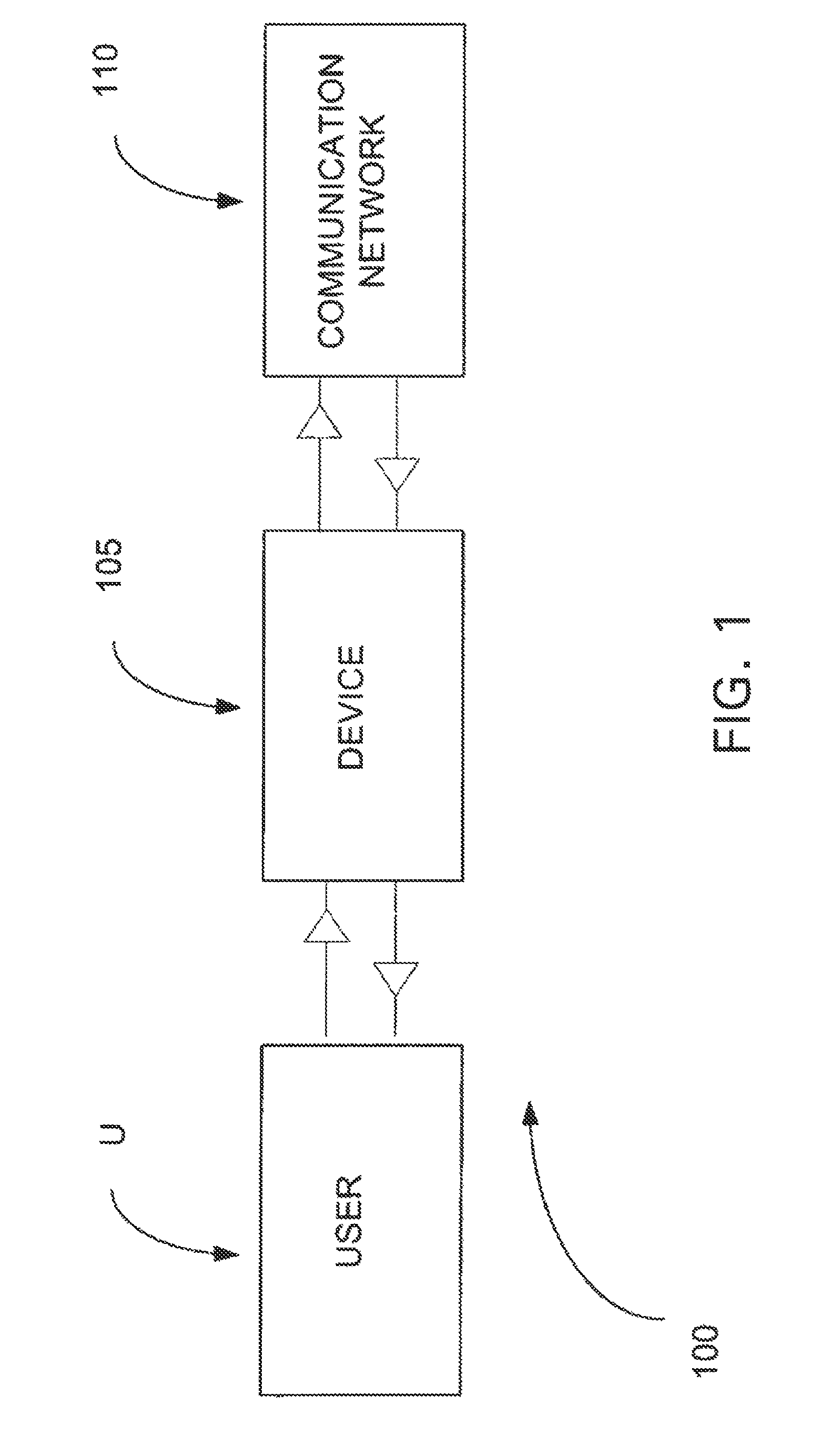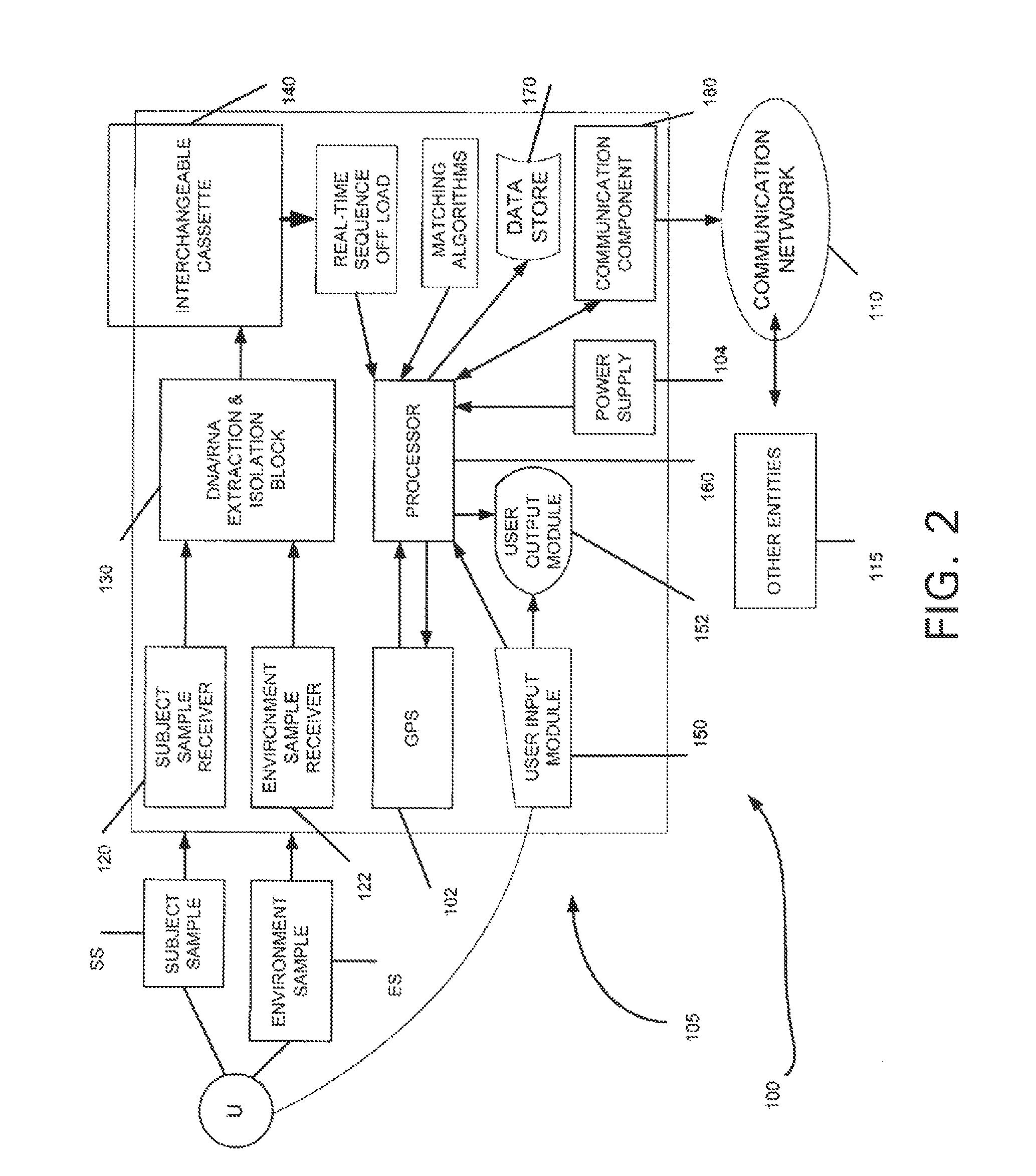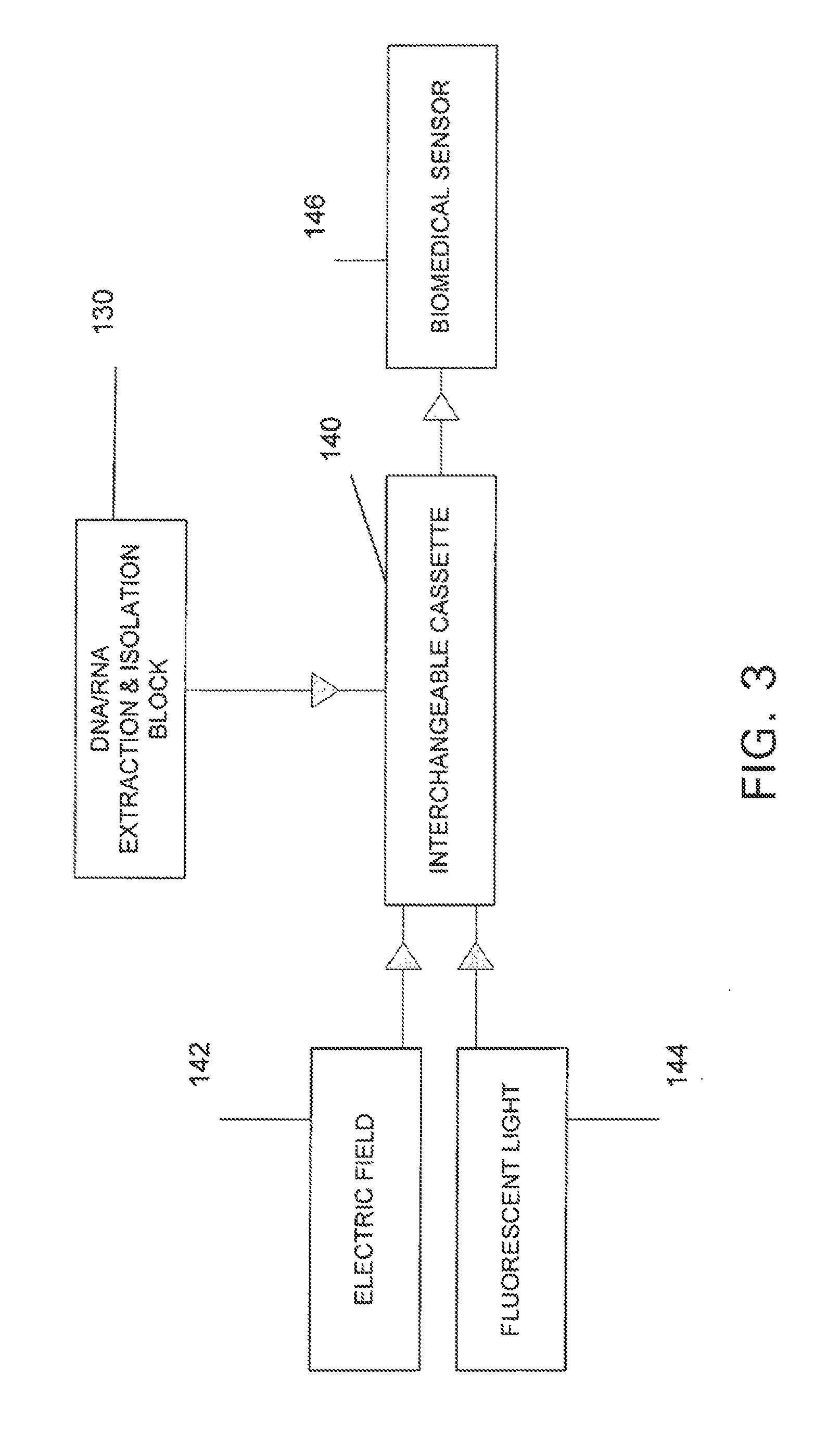Current methods for detecting and identifying viruses require specific nucleic acid tests and do not produce data on population diversity.
Conventional methods generally employ laboratory culturing methods for bacteria, fungi and parasites and are time consuming and expensive.
In none of these cases are relative populations able to be precisely determined nor are any of these methods able to detect and identify simultaneously the organisms present in microbial populations with respect to the specific taxa (genus, species, sub-species, and strain) of bacteria, viruses, parasites, fungi, or nucleic acid fragments including plasmids and mobile genomic components.
In addition, given the rapid rate of genomic mutation, and growing evidence of horizontal gene transfer, static methods that rely on predetermined signatures produce false negative results if (a) mutation has occurred in the nucleic acid sequence of the sample relative to the signature, (b) the target signature was horizontally transferred, or (c) genomic near neighbors are present in the sample.
In the diagnosis of infectious disease, conventional microbiology still relies on time consuming and laborious culturing methods and cumbersome tests for bacteria, viruses, parasites, and fungi, and also on immunological and molecular nucleic acid tests.
However, determining the cause of disease may require normalizing results to background populations, but current methods lack the ability to do this.
These new pathogenic strains of E. coli are much harder to identify in a microbiome using conventional methods because, although these new strains have been identified from their whole DNA genomes, tests using conventional static methods technology and involving a genetic signature have not been developed.
However, there are limitations to using BLAST output E-values, which describe the number of hits one can expect to see by chance when searching a database of a particular size and are used to gauge the significance of a match, as criteria for data parsing.
While this measurement is possible, the output is often skewed by both the database used for comparison and the length of the match.
The value of the BLAST score varies with the length of the nucleotide queried, and hence is not suitable alone for comparative analysis using universal cutoffs.
Previously, direct application of sequencing for rapid, multiplex diagnostics had not been possible.
Direct analysis of samples was considered too complex to interpret and selective methods (e.g., culture) are employed to minimize the number of organisms (mostly to one type) for analysis.
The capability to detect all pathogens using a single platform has not been possible.
Current immunological and NAT methods are useful for recognizing a limited range of pathogens under highly specific conditions, but each of these methods is subject to inadequacies.
Immunological techniques, or immunoassays, are known to suffer several critical weaknesses that limit their effectiveness in medical diagnosis.
For example, often it is difficult to produce antibodies that will react specifically with the target pathogen without reacting to other pathogens (i.e., cross-reactivity).
There are many pathogens that vary the molecules on their surfaces (e.g., Niesseria gonorrheae), making it impossible to detect all members of a given target group.
This makes early detection of infections difficult or requires culture of the microorganisms prior to immunological detection.
Limitations of PCR include: (a) the library of DNA primers to recognize sequences on pathogen genomes is limited; (b) mutants, strains, and engineered pathogens are not always readily detected if at all; (c) because of the limited DNA primer libraries, there is little or no recognition redundancy to exclude false positive or negative reactions; (d) primer / signature erosion occurs; and (e) unknown pathogens cannot be recognized because recognition of any pathogen requires previous knowledge of the nucleotide sequence of the particular pathogen's genetic material.
Sequencing-based methods have been used for whole genome analysis, but not for characterizing and identifying populations of microorganisms or as a predictive and forensic tool for decision making.
All of these methods have limited use when a sample comprises a mixture of organisms.
They can only confirm the presence of a pre-known or suspected organism, but they cannot identify each of the organisms present in the sample and cannot identify to the species, sub-species, and / or strain level.
In addition, if a pre-known organism were present, but had undergone mutation in the pre-specified sequence, such methods would indicate a false negative.
In the past, such results have required involvement of many people, which demand too much time.
As a result, rapidity and accuracy may suffer.
If this is not possible, it represents a significant weakness in infectious disease control, homeland security, and bioterrorism response.
Despite these important advances in biological engineering, little progress has been made in building devices to quickly identify sequence information and transfer data more efficiently and effectively.
These sequencing methods cannot rapidly identify an organism from the data of an isolate, and no tools currently exist for identifying a mixture of organisms based on metagenomic data created by these sequencing methods.
 Login to View More
Login to View More 


